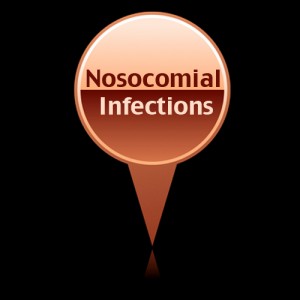This interesting review article from 2012 bridges clinical Microbiology and the study of the built environment. Authors Borkow and Monk discuss various sources of nosocomial infections (NI) and a potential solution to the problem.
 Despite rigorous efforts to sterilize and sanitize hospitals, NI are persistent and pose a serious threat to patients who are already vulnerable. Direct contact between individuals are a primary reason that NI spread rapidly, but textiles and hard surfaces can also be a major source of pathogens. Objects such as mattresses, pillowcases, bedrails, door knobs, and bedside tables can harbor dangerous bugs. Other studies have found that biocidal surfaces in hospitals can greatly reduce the risk of contracting an infection. It has been found that hard and soft surfaces incorporating copper harbor fewer microbes than surfaces without copper. This is because copper is strong biocidal agent and can even protect against spores. If more copper can be utilized when building and modeling hospitals, it is possible that we will observe a significant drop in NI.
Despite rigorous efforts to sterilize and sanitize hospitals, NI are persistent and pose a serious threat to patients who are already vulnerable. Direct contact between individuals are a primary reason that NI spread rapidly, but textiles and hard surfaces can also be a major source of pathogens. Objects such as mattresses, pillowcases, bedrails, door knobs, and bedside tables can harbor dangerous bugs. Other studies have found that biocidal surfaces in hospitals can greatly reduce the risk of contracting an infection. It has been found that hard and soft surfaces incorporating copper harbor fewer microbes than surfaces without copper. This is because copper is strong biocidal agent and can even protect against spores. If more copper can be utilized when building and modeling hospitals, it is possible that we will observe a significant drop in NI.
I am not buying most of this whole concept. The article here is by authors from Cupron Scientific who specialize in making copper based antimicrobials. I would view every single thing in this paper with a big big big skeptical eye.
Me Too!